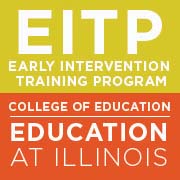Course Objectives & Outcomes:
Define AT according to Federal law, and describe/understand various categories of AT
Differentiate among the various categories of AT devices that are/are-not covered by the early intervention program
Describe considerations involved in the initial assessment of the needs & goals of the AT device
After performing a physical exam to assess anatomical challenges and strength, determine the necessary customizations of an AT device to meet the child’s specific anatomical needs.
In addition to evaluating short and long term AT options & solutions, be sure to engage in ongoing coordination with the family and vendors re: AT solutions
Learn about typical and challenged horizontal developmental positions in early childhood
Perform a physical assessment and therapeutic strategies for challenged horizontal developmental positions to promote posture and function in supine, prone, sidelying and quadruped
Evaluate for and utilize appropriate AT devices & accessories that may support and assist a child in each developmental position.
Describe the typical development and possible challenges experienced in sitting
Perform a physical assessment with therapeutic strategies for promoting vertical developmental position in sitting and standing
Evaluate for and utilize appropriate AD devices and accessories for support, positioning, and activities in sitting & standing
Utilize the primary and secondary support surfaces positioning belts and features of the base to meet the child’s physical and functional needs.
Target Audience: Occupational therapists, COTA's
Course Level: Various
Content Area: Professional
AOTA Classification Codes
Domain of Occupational Therapy
Areas of occupation: ADL, Education, work, social participation
Activity Demands: social demands, sequence & timing, required actions & performance skills,
Performance Patterns: Roles
Professional Issues
Legal, Legislative, Regulatory & Reimbursement Issues: federal/ state regulatory statutes
Contemporary Issues & Trends: Ethics, EBP
Target Audience: all audiences, Introductory







